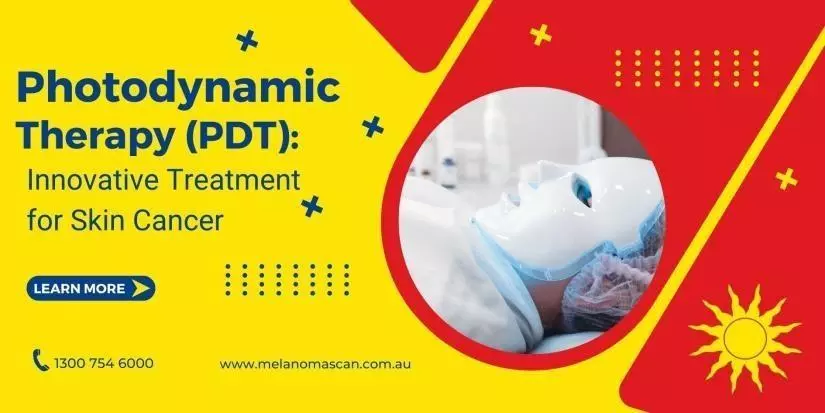Skin cancer is a significant health concern, and advancements in treatment options continue to improve patient outcomes. One such innovative approach is Photodynamic Therapy (PDT), which has shown promising results in the treatment of skin cancer.
In this blog article, we will explore the concept of PDT, its mechanism of action, benefits, and its role as an effective treatment option for skin cancer. At Melanoma Scan, we prioritise early detection and offer comprehensive skin checks. Take a proactive step towards your skin health by booking a skin check today.
Understanding Photodynamic Therapy (PDT):
Photodynamic Therapy (PDT) is a non-invasive treatment technique that utilizes the interaction of light and a photosensitizing agent to target and destroy cancerous cells. The process involves three essential components: a photosensitizing agent, light of a specific wavelength, and oxygen.
How Photodynamic Therapy Works:
- Photosensitizing Agent Application: A photosensitizing agent, often in the form of a topical cream or solution, is applied to the skin. This agent selectively accumulates in cancer cells and remains inactive until exposed to light.
- Activation with Light: After a specific incubation period, the targeted area is exposed to light of a specific wavelength. This light activates the photosensitizing agent, causing it to release energy and generate reactive oxygen species.
- Destruction of Cancerous Cells: The reactive oxygen species produced by the activated photosensitizing agent destroy the cancer cells by inducing oxidative damage and apoptosis (cell death).
Benefits of Photodynamic Therapy:
- Non-Invasive and Precise: PDT is a non-surgical and localized treatment option, minimizing damage to surrounding healthy tissue. It offers precise targeting of cancer cells while sparing normal cells.
- Effective for Various Skin Cancer Types: PDT has shown efficacy in treating various skin cancer types, including basal cell carcinoma, squamous cell carcinoma, and certain types of non-melanoma skin cancers. It can also be effective for precancerous lesions.
- Minimal Downtime and Cosmetic Outcome: Unlike surgical procedures, PDT generally involves minimal downtime and offers favourable cosmetic outcomes. It is well-suited for treating skin cancer in cosmetically sensitive areas.
- Potential for Repeat Treatments: PDT can be repeated if necessary, allowing for additional treatments and ongoing monitoring of the treated area.
Role of PDT in Early Detection and Treatment:
PDT plays a crucial role in the early detection and treatment of skin cancer. Its non-invasive nature makes it suitable for detecting and treating lesions in their early stages, leading to improved outcomes and reduced risks of complications. PDT can be used as a standalone treatment or in combination with other approaches, such as surgery or topical medications, depending on the specific case.
Act Today: Book a Skin Check!
Don't wait for symptoms to manifest. Take a proactive step towards your skin health by booking a comprehensive skin check at Melanoma Scan. Our expert team utilizes advanced imaging technology, including PDT, for early detection and effective treatment. Prioritise your well-being and ensure peace of mind by scheduling a skin check today.
Conclusion:
Photodynamic Therapy (PDT) offers an innovative and effective treatment option for various types of skin cancer. Its-invasive nature, precise targeting, and favourable cosmetic outcomes make it an attractive choice for patients seeking early detection and treatment. At Melanoma Scan, we are dedicated to providing comprehensive skin checks and personalized care. Take control of your skin health by booking a skin check today. Together, let's Prioritise early detection, prevention, and well-being.
Don't leave your skin health to chance. Book a comprehensive skin check today at Melanoma Scan to ensure early detection and expert care. Visit our website or call 1300 754 600 to schedule your appointment. Take control of your skin health and prioritise early detection and prevention.


